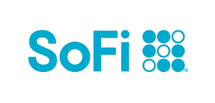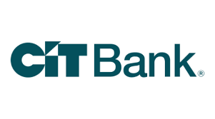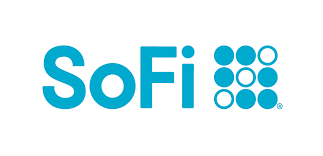Let's be real: Managing money as a student isn't easy. Between late-night pizza runs and overpriced textbooks, saving might not be your first priority -- but it can seriously pay off.
A good savings account isn't just a place to stash birthday money or part-time job income. It's your training ground for building smart money habits and growing your financial independence. And if you pick the right account, you can actually earn something on your savings instead of letting it sit there doing nothing.
Below, I'll break down some of the best savings accounts for college students right now.
They aren't all labeled "student" savings accounts, but they're low on fees, easy to use, and offer solid interest rates, which is what actually matters.
The top 3 student savings accounts
| Offer | APY | Bonus | Next Steps | ||||||||||
|---|---|---|---|---|---|---|---|---|---|---|---|---|---|

Member FDIC.
4.90/5
Our ratings are based on a 5 star scale.
5 stars equals Best.
4 stars equals Excellent.
3 stars equals Good.
2 stars equals Fair.
1 star equals Poor.
We want your money to work harder for you. Which is why our ratings are biased toward offers that deliver versatility while cutting out-of-pocket costs.
4.90/5
Our ratings are based on a 5 star scale.
5 stars equals Best.
4 stars equals Excellent.
3 stars equals Good.
2 stars equals Fair.
1 star equals Poor.
We want your money to work harder for you. Which is why our ratings are biased toward offers that deliver versatility while cutting out-of-pocket costs.
Open Account for SoFi Checking and Savings
On SoFi's Secure Website. |
APY:
up to 4.00%
Rate info
Earn up to 4.00% Annual Percentage Yield (APY) on SoFi Savings with a 0.70% APY Boost (added to the 3.30% APY as of 12/23/25) for up to 6 months. Open a new SoFi Checking and Savings account and pay the $10 SoFi Plus subscription every 30 days OR receive eligible direct deposits OR qualifying deposits of $5,000 every 31 days by 1/31/26. Rates variable, subject to change. Terms apply at sofi.com/banking#2. SoFi Bank, N.A. Member FDIC.
Min. balance to earn: $0
|
Minimum Balance To Earn APY:
$0
|
Bonus:
N/A
|
Open Account for SoFi Checking and Savings
On SoFi's Secure Website. |
|||||||||

Member FDIC.
4.80/5
Our ratings are based on a 5 star scale.
5 stars equals Best.
4 stars equals Excellent.
3 stars equals Good.
2 stars equals Fair.
1 star equals Poor.
We want your money to work harder for you. Which is why our ratings are biased toward offers that deliver versatility while cutting out-of-pocket costs.
4.80/5
Our ratings are based on a 5 star scale.
5 stars equals Best.
4 stars equals Excellent.
3 stars equals Good.
2 stars equals Fair.
1 star equals Poor.
We want your money to work harder for you. Which is why our ratings are biased toward offers that deliver versatility while cutting out-of-pocket costs.
Open Account for Capital One 360 Performance Savings
On Capital One's Secure Website. |
APY:
3.30%
Rate info
See Capital One website for most up-to-date rates. Advertised Annual Percentage Yield (APY) is variable and accurate as of Jan. 8, 2026. Rates are subject to change at any time before or after account opening.
Min. balance to earn: $0
|
Minimum Balance To Earn APY:
$0
|
Bonus:
N/A
|
Open Account for Capital One 360 Performance Savings
On Capital One's Secure Website. |
|||||||||
|
|||||||||||||
At Motley Fool Money, we rate savings accounts on a five-star scale, shown in tenths of a point to highlight even small differences between products. Accounts are evaluated across four main criteria:
- APY
- Brand and reputation
- Fees and minimum requirements
- Accessibility and features
Scores may be adjusted to reward limited-time high rates or penalize accounts with excessive fees. Our goal is to highlight accounts that are competitive, easy to use, and backed by trusted institutions. Learn more about how Motley Fool Money rates bank accounts.
At Motley Fool Money, we rate savings accounts on a five-star scale, shown in tenths of a point to highlight even small differences between products. Accounts are evaluated across four main criteria:
- APY
- Brand and reputation
- Fees and minimum requirements
- Accessibility and features
Scores may be adjusted to reward limited-time high rates or penalize accounts with excessive fees. Our goal is to highlight accounts that are competitive, easy to use, and backed by trusted institutions. Learn more about how Motley Fool Money rates bank accounts.
SoFi Checking and Savings
On SoFi's Secure Website.

On SoFi's Secure Website.
Earn up to 4.00% Annual Percentage Yield (APY) on SoFi Savings with a 0.70% APY Boost (added to the 3.30% APY as of 12/23/25) for up to 6 months. Open a new SoFi Checking and Savings account and pay the $10 SoFi Plus subscription every 30 days OR receive eligible direct deposits OR qualifying deposits of $5,000 every 31 days by 1/31/26. Rates variable, subject to change. Terms apply at sofi.com/banking#2. SoFi Bank, N.A. Member FDIC.
- Competitive APY on both Savings and Checking
- No monthly account fee
- Welcome bonus up to $300 (direct deposit required)
- ATM access
- Unlimited number of external transfers (up to daily transaction limits)
- FDIC insured (up to $3M with opt-in to SoFi Insured Deposit Program)
- Early access to direct deposits
- Tools to help you track savings goals
- Combo account only; no stand-alone savings or checking
- Maximum Savings APY requires direct deposit
- No branch access; online only
- Overdraft protection requires monthly direct deposit minimum
For those who plan to set up direct deposit with their new account, we think SoFi Checking and Savings (Member FDIC) is hard to beat. Not only does this savings account offer a strong APY, but the linked checking account earns an above-average rate, too -- which is a rare perk. Plus, new customers earn a bonus of up to $300 with eligible direct deposit. Frankly, it's the kind of combo that could make it worthwhile to switch banking relationships.
My take: I love that SoFi® bundles checking and savings together with no account fees and a smooth app experience. The APY is competitive, and having up to 20 savings "vaults" makes it easy to organize your goals -- plus, early direct deposit is a nice bonus.
Capital One 360 Performance Savings
On Capital One's Secure Website.

On Capital One's Secure Website.
- Competitive APY
- No monthly account fee
- Comfort of a well-known brand and reputation
- Branch access (if you live near one)
- 24/7 customer support
- FDIC insured
- No ATM access
Capital One 360 Performance Savings checks all the boxes we look for in a high-yield savings account. It even offers branch locations and Capital One Cafes where customers can seek in-person support (if you live near one). This makes it a great fit when you want to reap the rewards of online banking but aren't quite ready to cut ties with brick-and-mortar banks.
My take: If you want branch access and a strong APY, Capital One's account is tough to beat. No minimums or monthly fees make it student-friendly, and if you live near a branch or Capital One Cafe, you get that face-to-face help when you want it.
CIT Savings Connect
On CIT's Secure Website.

On CIT's Secure Website.
- Competitive APY
- No account fees
- Unlimited number of external transfers (up to daily transaction limits)
- FDIC insured
- $100 minimum deposit required
- No branch access; online only
CIT Savings Connect has among the highest APYs we've seen for an account with no account fees or minimum balance requirement (though a $100 initial deposit is required to open it). It's a great fit for those who want a top-notch APY and a flexible online banking experience.
APY — Annual Percentage Yield is accurate as of November 20, 2025. Interest Rates for the Savings Connect Account are variable and may change at any time without notice. The minimum to open a Savings Connect account is $100. Fees could reduce earnings on the account.
Based on comparison to the national average Annual Percentage Yield (APY) on savings accounts as published in the FDIC National Rates and Rate Caps, accurate as of December 15, 2025.
For complete list of account details and fees, see our Personal Account disclosures.
My take: CIT's high APY and zero monthly fees make this a solid pick, especially if you're cool doing everything online. The $100 minimum to open is low enough for most students, and you won't get hit with surprise charges -- just straightforward saving.
What makes a good student savings account?
Look for accounts that keep things simple: low or no fees, easy access to your money, a solid mobile app, and a decent interest rate. The best savings accounts won't just pay well, they'll make saving easy and fit your busy student life without hidden surprises.
Don't get distracted by just the APY
Yes, the interest rate matters, but don't let it be the only thing you look at. Rates change all the time. What's high today could drop next month. So focus on the overall package: How easy is it to use? Are there annoying fees? Can you access your money quickly?
Mobile experience = essential
If the bank's app is clunky or glitchy, skip it. You want to be able to check your balance, move money, or get help without jumping through hoops. Before you open anything, take two minutes to peek at App Store or Google Play reviews.
Watch out for sneaky fees
Some banks love charging for everything: monthly maintenance, overdrafts, inactivity, wire transfers. As a student, you don't need all that drama. Look for accounts that make it easy to avoid fees. Or better yet, don't charge them in the first place.
Make sure you can actually get to your money
Savings accounts are designed to be a bit "hands off," but you should still be able to get your cash when you need it. Some banks don't offer ATM cards for savings accounts, which can make access clunky. If you think you'll need quick access, that's something to pay attention to.
Why college students should open a savings account
A savings account is like your financial safety net. It helps you build an emergency fund, stash away money for big goals (like study abroad or spring break), and get used to separating your spending money from your "don't-touch-it" money.
The earlier you start, the more your savings can grow, and the more confident you'll get managing your own finances.
What kind of fees should you watch for?
Some banks love to nickel-and-dime you, and as a student, that's the last thing you need. Here are the most common fees to look out for and how to avoid them:
- Monthly maintenance fees: These are the worst. If the account charges one, make sure it's easy to waive -- or better yet, avoid it altogether.
- Overdraft and NSF fees: More common with checking accounts, but some savings accounts charge them too. Always make sure you've got enough in your account before setting up any transfers or payments.
- Inactivity fees: Some banks charge you for not using your account. Weird, but true.
- Returned deposit fees: If you cash a check that bounces, you might get dinged.
- Wire transfer fees: Not a huge deal for most students, but good to know if you ever need one.
How much do you need to open a student savings account?
Most online banks make it easy, with either no minimum or a pretty low one (like $100 or less). And if it's a student-branded account, you'll usually get even more flexibility here.
FAQs
-
Student accounts usually have lower fees and minimums designed for younger savers, but many regular savings accounts can work just as well.
-
Not always. Some accounts require proof of enrollment, while others are based on age or just offer no special requirements at all.
-
Nope. Rates can change over time, so don't pick an account based on the current APY alone. Look for a good overall experience too.
Banks we monitor
-
Here are the 100+ financial institutions we've evaluated in our research:
Alliant, Ally, All America Bank, American First Credit Union, American Express National Bank (Member FDIC), Arvest Bank, Aspiration, Axos Bank, B2 Bank, Bank of America, Bank5 Connect, Bank7, Barclays, Bask Bank, Betterment, Bluevine, BMO Bank, Bread Financial, Capital One, Carver Federal Savings Bank, Charles Schwab Bank, Chase, Chime®, CIT, Citibank, Citizens, Citizens Savings Bank, Columbia Bank, Connexus Credit Union, Consumers Credit Union, Copper, Cross River Bank, Customers Bank, Discover® Bank, E*TRADEEdward Jones, EverBank, Fidelity, Fifth Third Bank, First Foundation Bank, First Internet Bank of Indiana, First National Bank, First Tech Federal Credit Union, Flushing Bank, Freedom Bank, Generations Bank, GN Bank, Golden 1 Credit Union, Greenlight, Harborstone Credit Union, HSBC, Huntington Bank, Ivella, Kabbage by American Express, KeyBank, Laurel Road, LendingClub, Liberty Bank, Liberty Federal Credit Union, Marcus by Goldman Sachs, Mercury, Municipal Credit Union, Mutual of Omaha, NASA Federal Credit Union, Nationwide Bank, Navy Federal Credit Union, NBKC Bank, New York Community Bank, Northpointe Bank, Novo, OceanFirst Bank, Old National Bank, ONE Finance, OneUnited Bank, Oxygen, Pacific Western Bank, PNC Bank, Ponce Bank, Popular Direct, Presidential Bank, Prime Alliance Bank, Quontic, Radius, Raisin, Redneck Bank, Regions Bank, Relay, Republic Bank of Chicago, Revolut, Salem Five Bank, Sallie Mae, Santander Bank, SchoolsFirst Federal Credit Union, Simple, SoFi®, Synchrony Bank, TAB Bank, TD Bank, Third Federal, Truist Bank, U.S. Bank, UFB, Upgrade, USAA, Valley Bank, Vanguard, Varo Bank, Vio Bank, Wealthfront, Wells Fargo, Western Alliance Bank, and Zeta.
